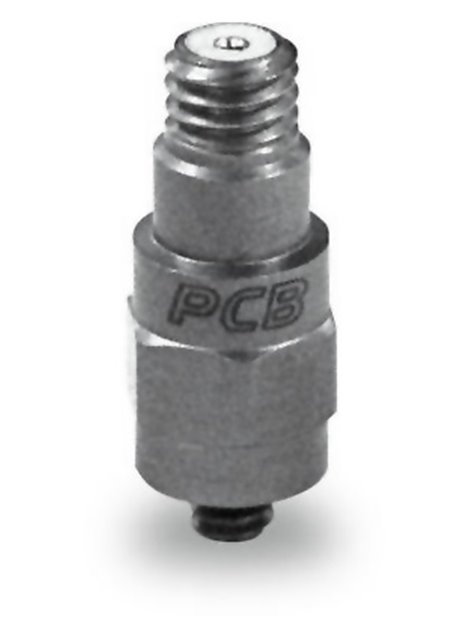PCB-(M)320C14
| basic data | |||
| sensitivity (±10%) | 5 mV / g | 0.51 mV/(m/s²) | |
| range | ± 1.000 g pk | ±9. 810 m/s² pk | |
| frequency range (±5%) | 1.0 … 10,000 Hz | ||
| Frequency range (± 10%) | 0.7 … 18,000 Hz | ||
| frequency range (± 3 dB) | 0.35 … 30,000 Hz | ||
| Resonance frequency | ≥60.000 Hz | ||
| wide band resolution | 0.01 g RMS | 0.1 m/s² RMS | [1] |
| Linearity | ≤ 1% | [3] | |
| transverse acceleration sensitivity | ≤ 5% | [2] | |
| conditions of use | |||
| (Shock) overload limit | ± 10.000 g pk | ±98.100 m/s² pk | |
| Temperature range (operation) | -100 … 325 ° F | -73 … 163 ° C | |
| Strain sensitivity (base area) | ≤ 0.0005 g/µε | ≤ 0.005 (m/s²)/µε | [1] |
| technical characteristics | |||
| Supply voltage | 18 … 30 V DC | ||
| constant power supply | 2 … 20 mA | ||
| Output impedance | ≤ 100 Ω | ||
| Bias voltage | 8 … 12 V DC | ||
| discharging charging time constant | 0.25 … 2.0 s | ||
| Spectral noise (1 Hz) | 6.4 | 62.784 | |
| spectral noise (10 Hz) | 1,400 µg / √ Hz | 13.734 (µm / s ²) / √ Hz | [1] |
| Spectral noise (100 Hz) | 360 µg / √ Hz | 3.532 (µm / s ²) / √ Hz | [1] |
| spectral noise (1,000 Hz) | 128 µg / √ Hz | 1.256 (µm / s ²) / √ Hz | [1] |
| physical properties | |||
| size-Height | 0.74 at | 18.8 mm | |
| size - Allen | 9/32 in | 7.1 mm | |
| mass | 0.06 oz | 1.7 grams | [1] |
| Sensor element | quartz | ||
| geometry of the sensor element | shear principle | ||
| housing material | Titanium | ||
| Sealing | hermetically sealed welded | ||
| electrical connection | 10-32-coaxial socket | ||
| Connection position | above | ||
| mounting screw | 5-40 male | ||
| Assembly torque | 8 … 12 in-lb | 90 … 135 NCM | |
| notes | |||
| [1] | typically | ||
| [2] | transverse acceleration sensitivity typically ≤ 3% | ||
| [3] | zero-based balancing line, determined using the method of least squares | ||
| [4] | details: see PCBs Declaration of conformance PS023 |




